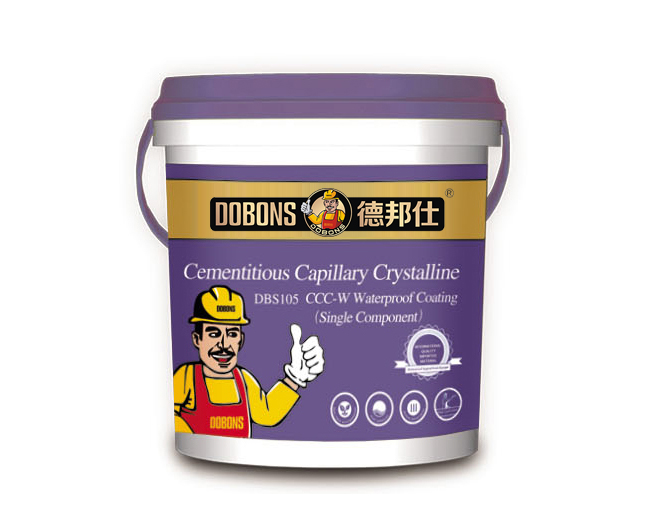Waterproofing versus dampproofing
Date of issue:2019-11-21 Author: Click:
There is a distinct difference between dampproofing and waterproofing. Dampproofing is intended to keep out soil moisture while waterproofing keeps out both moisture and liquid water. Buildings have been dampproofed for years, a practice that used to be mistakenly referred to as waterproofing. The International Residential Code (IRC), in Section R406, specifies the conditions that require either dampproofing or waterproofing. Any concrete or masonry foundation walls "that retain earth and enclose interior spaces and floors below grade shall be dampproofed from the top of the footing to the finished grade." The IRC then provides a list of the permissible materials, which include bituminous coating and acrylic-modified cement. Waterproofing is only required by the IRC "in areas where a high water table or other severe soil-water conditions are known to exist."

Dampproofing is a coating, usually asphalt-based, that is either sprayed on or hand applied to the outside of the wall. Though less frequently recommended in modern residential construction, it is still an acceptable form of treatment in many situations. The drawbacks include an inability to seal larger cracks or holes left by form ties and the potential for damage by coarse or careless backfill. But with proper surface drainage, correctly installed foundation drains at the footing, and the absence of hydrostatic pressure to drive water infiltration, dampproofing can supply adequate and long-lasting protection for many crawl spaces and basements.
Waterproofing a foundation requires the same care as dampproofing in regard to surface treatment and drain pipe, but is much more exacting in the treatment of the wall itself. Obviously, if there is any doubt about whether or not dampproofing will do the job, it's best to spend the extra time and money to waterproof, particularly for habitable space.
Local conditions vary widely and help determine the right choice for preventing water infiltration. Some areas with drier climates and lower water tables regularly build basements with foundation walls that may be 10 feet tall. Other areas, with high annual rainfall, high water tables, and no frost in the soil, more commonly use slab-on-grade foundations. But even these foundations need protection to keep moisture from migrating up from the ground through the slab (see Vapor Barriers for Concrete Slabs). And consider topography—a walkout basement built into the side of a hill has a good opportunity to use gravity to move sub-surface water away, whereas a full basement on the flats in a wet area may have to consider mechanical means in the absence of nearby well-drained soil.
Of course the depth of the foundation wall and the use of the interior space will also determine the choice of methods. A 36-inch frost wall for an unheated crawlspace built on well-drained soil and employing a gravity drain is a good candidate for damp-proofing. The house next door with a 10-foot-high foundation wall and a finished basement might opt for a fully waterproofed foundation wall system.










